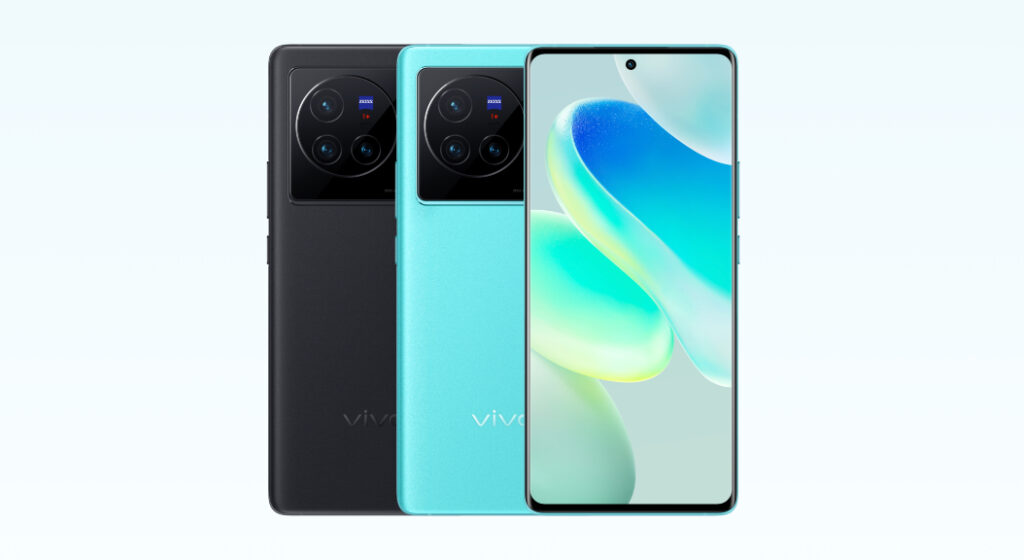[ad_1]

With a global launch planned in the coming weeks, Vivo recently unveiled its latest flagship Vivo X90 in the Chinese market. On paper, the phone doesn’t look like a significant upgrade and it uses the same hardware as the previous flagship, the Vivo X80. However, there are some minor adjustments that may affect your purchasing decision. We compared the new Vivo X90 Until earlier Vivo X80 (Review) in more detail. In this comparison, let’s see how the two phones differ from each other in terms of price, design and specifications.
Vivo X90 vs Vivo X80: Price
In China, both the Vivo X90 and X80 are available in four SKUs, starting with the entry-level model with 8GB of RAM and 128GB of internal storage and ending with the most expensive model with 12GB of RAM and 512GB of internal storage. Vivo has priced the new X90 against all odds and priced the X80, starting at RMB 3699 (roughly Rs. 42,100) and ending at RMB 4999 (roughly Rs. 56,900).
Vivo X90 vs Vivo X80: Design, Display, Hardware and Camera
design
Despite having similar hardware, the Vivo X90 has improved the look and feel. Like the X80, the phone still sports a glass sandwich design with a curved front panel. The rear design has been changed. The camera module is cut into a circle on the back of the X80, which has a dual-section finish. That circular module design is still present in the X90, but the sectional design has been abandoned in favor of a less cluttered look. The Vivo X90 has the refined X80 look and feel, which we’ll see more of in upcoming flagships next year.
However, the button layout is still in the same place; The power and volume buttons are on the right side, leaving the left edge blank. The secondary microphone and an IR blaster are on the top, while the SIM card slot, USB Type C port and speaker grill are on the bottom of the device. The X90 now has an IP64 rating, which the X80 lacked.

presentation
Similar to what we saw on the X80, Vivo has opted for a 6.78-inch AMOLED panel for the X90. But with 1.5K resolution, 120Hz refresh rate and a maximum brightness of 1300 nits, the panel is a bit more pixel-dense. The display has HDR10+ certification with Widevine L1 support, enabling HD streaming on OTT platforms and HDR video streaming on YouTube. The panel has this new 1440Hz PWM rate which is easy on the eyes and enhances the viewing experience.
However, Vivo X80’s AMOLED panel has full HD+ resolution, 120Hz refresh rate and a maximum brightness of 1600 nits. Although the panel in this case does not receive the previous E5 generation and the new PWM improvements, it still has HDR10+ certification and supports Widevine L1.
Processor, RAM and Storage
Brand new MediaTek Dimension 9200 SoC Powers the Vivo X90. This is the latest and greatest product from MediaTek, and it features the new ARM X3 performance core, which significantly boosts the performance of this new SoC. The device is available in several SKUs, the base model comes with 8GB LPDDR5 RAM and 128GB UFS3.1 storage and the higher storage options include the latest UFS4.0 memory option.
On the contrary, the MediaTek Dimension 9000 SoC The expired X2 performance core powers the Vivo X80. The phone comes in a variety of SKUs, from the base model with 8GB LPDDR5 RAM and 128GB internal storage to the top model with 12GB RAM and 512GB internal storage. Each model has internal storage compliant with the UFS3.1 specification.
As far as software is concerned, both the handsets are running on the latest Android 13 Operating system with Vivo’s FunTouchOS on top. FunTouchOS offers the most customized experience on stock Android and is feature packed to the brim.

Camera
Vivo has a conservative philosophy when it comes to optics. The X90 model still has a triple camera setup on the back with a 50MP main sensor and support from a 12MP ultra-wide angle lens and a 12MP 2x telephoto sensor, although the X90 Pro models have seen a significant improvement. However, this time Vivo has also included a Time of Flight (ToF) sensor mainly to improve the smartphone’s depth perception, leading to better portrait shots. The smartphone has a 32MP front camera that fulfills all the requirements for selfies and video chats. New here is Vivo’s custom V2 imaging chip along with Zeiss optics.
The Vivo X80 sports a triple camera setup at the back, which includes a 50MP main sensor and 12MP ultra-wide angle and 12MP 2x telephoto lenses. For video calls and selfies, there is a 32MP sensor on the front. To enhance camera performance, the X80 features Zeiss optics combined with the brand’s V1+ proprietary imaging chip.
Battery
One area where Vivo has improved significantly is the battery. For example, the X90 has a 4,810mAh battery that supports 120W fast charge. The X80, in contrast, has a modest 4,500mAh battery and supports 80W fast charging. Both models miss out on wireless & reverse wireless charging but come with wired reverse charging.
